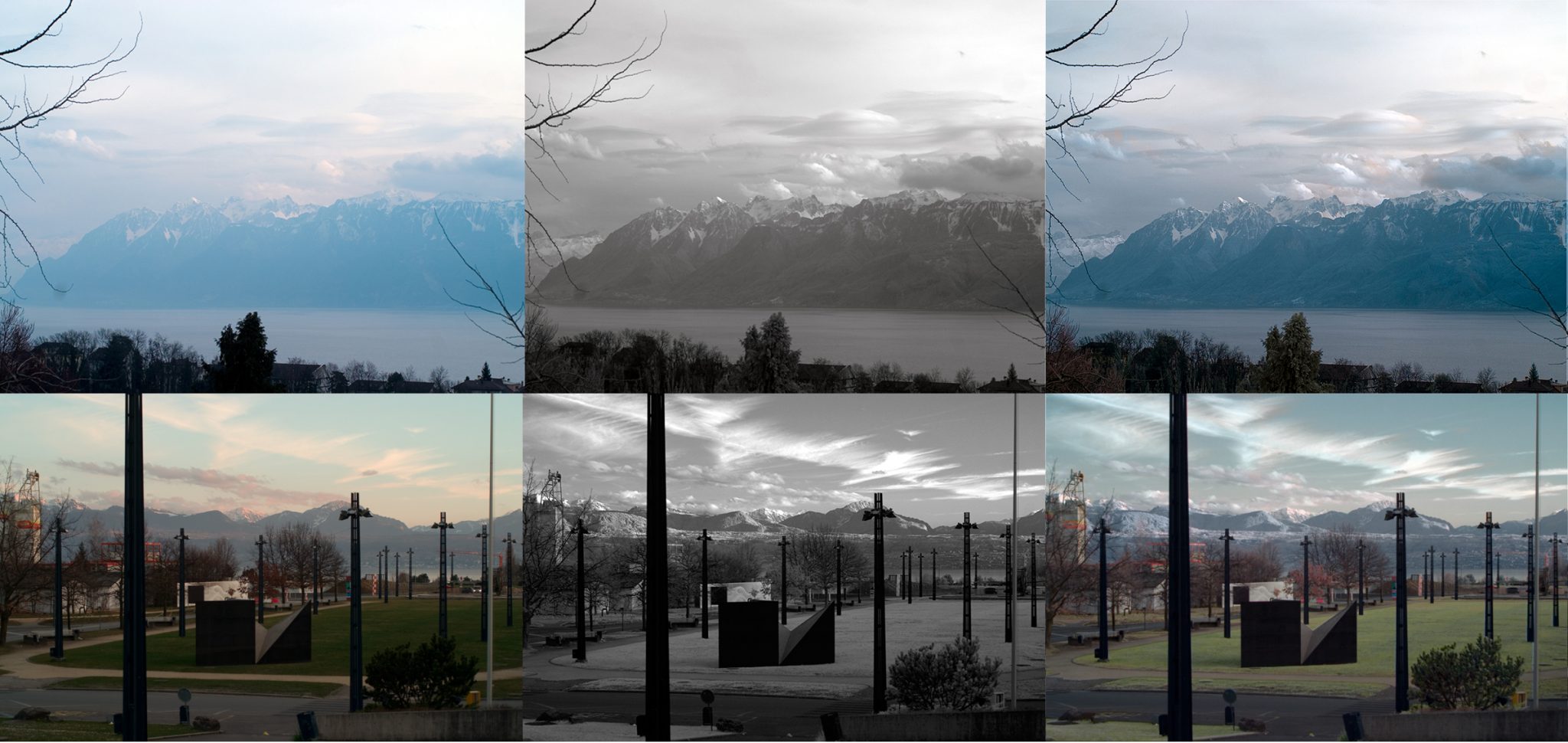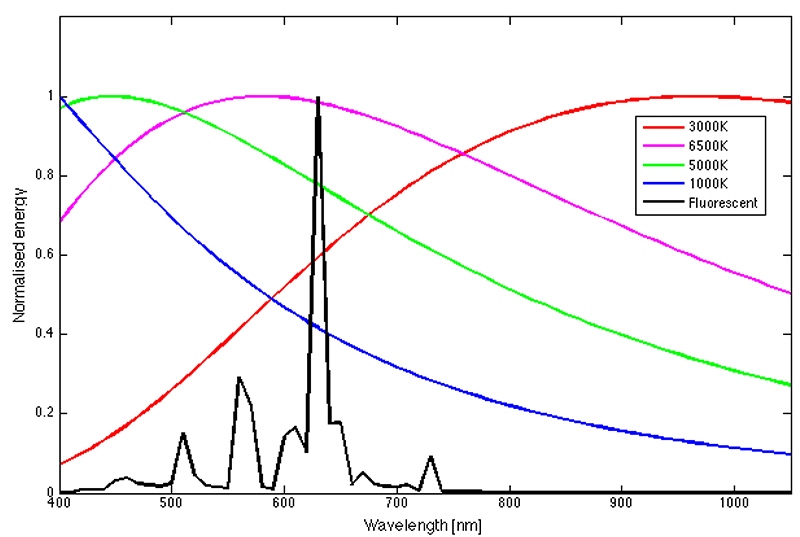While there is a number of applications that use near-infrared images, very few combine NIR and visible information of the same scene. We do not consider here hyperspectral techniques that use a number of narrow bands, but rather the combination of images that can be captured using a modified camera.
The images presented in this section and used in our relevant publications have all been taken with a modified Canon 300D camera, where the internal hot-mirror has been replaced by a piece of clear glass. Visible images are obtained by placing a BW 426 filter in front of the lens, NIR images by placing a Hoya R72 filter. More details about the acquisition procedure can be found in [1].
Near-infrared images have intrinsic properties that are desirable in colour, visible, imagery of a number of scenes, such as the increased contrast between sky and clouds, shadowed and non-shadowed areas, and the increased optical depth.
 Looking at both NIR and visible images of the same scene, one observes the traditional properties of NIR: enhanced local and cloud contrast, bright vegetation, dark water, etc. The scene as such is, however, instantly recognisable
Looking at both NIR and visible images of the same scene, one observes the traditional properties of NIR: enhanced local and cloud contrast, bright vegetation, dark water, etc. The scene as such is, however, instantly recognisableColour-NIR images A colour image is generally represented as a combination of three colour channels: Red, Green and Blue. NIR information on the other hand forms an intensity image that can be shown as greyscale. In [1], we proposed that NIR contained information could be interpreted as brightness and/or frequency content counterparts to the colour images. A way to obtain coloured NIR images is to first transform the RGB images into luminance-chrominance colour encoding and then replace the luminance channel by the near-infrared one. Results depend on the colourspace utilised; the best of of our results came form using alternatively YCbCr and HSV.
 The effect of adding chrominance information to near-infrared images. The resulting colour images are sharper, with greater contrast and different information (see the mountain range in the bottom image).
The effect of adding chrominance information to near-infrared images. The resulting colour images are sharper, with greater contrast and different information (see the mountain range in the bottom image).Illuminant Estimation
A scene illuminant can be described by its spectral power distribution (SPD), i.e., the relative amount of energy it emits at a given wavelength. The behaviour of commonly found illuminants can exhibit significant differences between the visible and near-infrared part of the spectrum. We showed in [2] that the relative brightness ratios between NIR and colour channels could be used to determine, with accuracy, the illumination impinging upon the scene.
 Some common illuminants’ SPDs. Large differences can be observed between visible and NIR, thus aiding illuminant estimation.
Some common illuminants’ SPDs. Large differences can be observed between visible and NIR, thus aiding illuminant estimation.A large number of scenes contain more than one illuminant. In this event, most colour constancy methods are erroneous since they look for a single answer to the problem of estimating the scene illuminant. For instance, when using a flash the foreground is correctly white balanced but the background often bears the orange colour cast of incandescent illumination.
Due to the sometimes large differences between illuminants’ SPDs in the near-infrared, using NIR images can provide valuable information regarding the detection of multiple illuminants. In [2], we showed that using NIR to {R,G,B} ratios allowed one to identify the location of different lights and that, through interpolation, a light field could be recovered.
 A lamp with two different light bulbs. From left to right: the original colour image with failing white balance; a greyscale version of the visible image; the NIR image showcasing the different illuminants; the intensity ratio of a downsampled version of the image; the final light field obtained by interpolation of the downsampled result.
A lamp with two different light bulbs. From left to right: the original colour image with failing white balance; a greyscale version of the visible image; the NIR image showcasing the different illuminants; the intensity ratio of a downsampled version of the image; the final light field obtained by interpolation of the downsampled result.